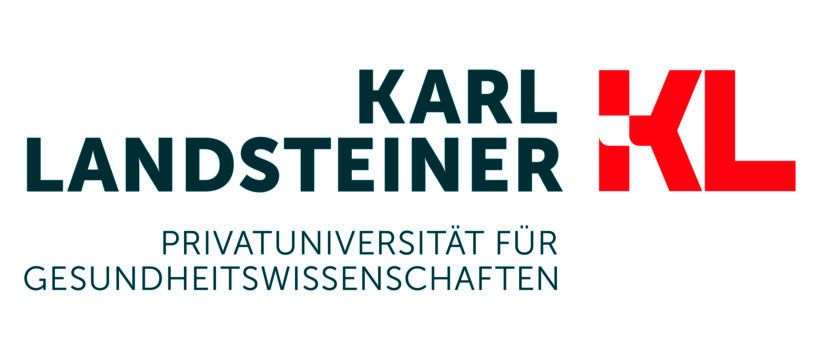Team from Karl Landsteiner University of Health Sciences in Krems develops first integrated model of supportive peer relationships worldwide
Krems (Austria), August 19th 2021 – How supportive social relationships between adolescents affect their social and emotional development has been captured for the first time in an integrative model. The researchers who developed the model analysed and evaluated data from a total of 364 studies on peer relationships. The team from Karl Landsteiner University of Health Sciences in Krems (KL Krems) succeeded in identifying 93 variables which have a significant influence on social wellbeing. Among these factors, identity and social-emotional skills are of central importance.
Adolescents are shifters between worlds: the adult world and that of their peers. The latter is less controlled and free from the norms of grown-ups. As a result, peer relationships play a crucial role during childhood and adolescence. But a model that relates the forces at work there and explains their influence on an individual´s development has been lacking so far. Now, the research group D.O.T. (Die offene Tür) at KL Krems has succeeded in presenting such a model as part of a comprehensive project.
Peers, Buddies, Best Friends
Supportive peer relationships are defined as relationships that have a particularly high quality for the individual and that have a protective function. They contribute significantly to self-perception, the development of social skills and academic performance. A lack of supportive peer relationships can lead to social withdrawal, risk-taking behaviours, as well as long-term mental health consequences. “In view of the huge significance of peer relationships for young peoples’ development, it is surprising that there has not yet been a model that describes the interactions of the various influences and their effects on children and adolescents which in turn could have formed the basis for therapeutic interventions and for research,” explained Dr. Beate Schrank, head of the D.O.T. research group at KL Krems. This is precisely the model she has now developed with her colleagues. To do so, the team analyzed 364 studies from the last 20 years in eight different languages that dealt with peer relations.
“The model we have now put forward covers the links between 93 variables,” elaborates Dr. Marija Mitic, lead author of the study, which has now been published in an international journal. “These factors relate to individuals on the one hand, and their environments on the other.” Among the factors related to the individual, “identity” and “social-emotional competencies” stood out in importance. Environmental factors included in the model were primarily peers, school, family, and neighborhood. In this context, the model identified the school as an essential place for any influence.
Research Gap
Of course, modern technologies and the Internet were also included as environmental influencers. However, when evaluating all 364 studies, the team was struck by the fact that research on this subject is so thin on the ground. As Dr. Schrank puts it: “It’s really alarming to see how little research has been conducted on the influence of virtual and online settings on young peoples’ social environments. After all, this is where more and more social contact takes place, and research in this regard is urgently needed.”
The model proposed by the D.O.T. team at KL Krems can serve as an organisational framework that will make it easier to understand supportive social relationships among adolescents in a structured and integrated way in the future. It thus also contributes to KL Krems’ research focus on topics that are highly relevant to health policy.
Original publication with graphic of the model: Toward an Integrated Model of Supportive Peer Relationships in Early Adolescence: A Systematic Review and Exploratory Meta-Analysis. Front. Psychol. M. Mitic, K. A. Woodcock, M. Amering, I. Krammer, K. A. M. Stiehl, S. Zehetmayer & Beate Schrank on behalf of the D.O.T. Co-I team. February 2021, Vol. 12. Doi: 10.3389/fpsyg.2021.589403
About Karl Landsteiner University of Health Sciences
At Karl Landsteiner University of Health Sciences (KL) in Krems, the comprehensive approach to health and disease is a fundamental objective for research and teaching. With its Europe-wide recognized bachelor-master system, KL is a flexible educational institution that is tailored to the needs of students, the requirements of the labor market as well as the scientific challenges. Currently KL hosts about 600 students in the fields of medicine and psychology. The four university hospitals in Krems, St. Pölten, Tulln and Eggenburg ensure clinical teaching and research at the highest quality level. In research, KL focuses on interdisciplinary fields with high relevance to health policy – including medical technology, molecular oncology, mental health and neuroscience, as well as water quality and related health aspects. KL was founded in 2013 and accredited by the Austrian Agency for Quality Assurance and Accreditation (AQ Austria). www.kl.ac.at/en
Scientific Contact
Priv. Doz. Dr. Beate Schrank
Head of the D.O.T. Research Group
Karl Landsteiner University of Health Sciences
Dr.-Karl-Dorrek-Straße 30
3500 Krems / Austria
T +43 2732 720 440
Karl Landsteiner University of Health Sciences
Mag. Barbara Peutz
Communication, PR & Marketing
Dr.-Karl-Dorrek-Straße 30
3500 Krems / Austria
T +43 2732 72090 230
E barbara.peutz@kl.ac.at
Copy Editing & Distribution
PR&D – Public Relations for Research & Education
Dr. Barbara Bauder
Kollersteig 68
3400 Klosterneuburg / Austria
T +43 664 1576350
E bauder@prd.at

